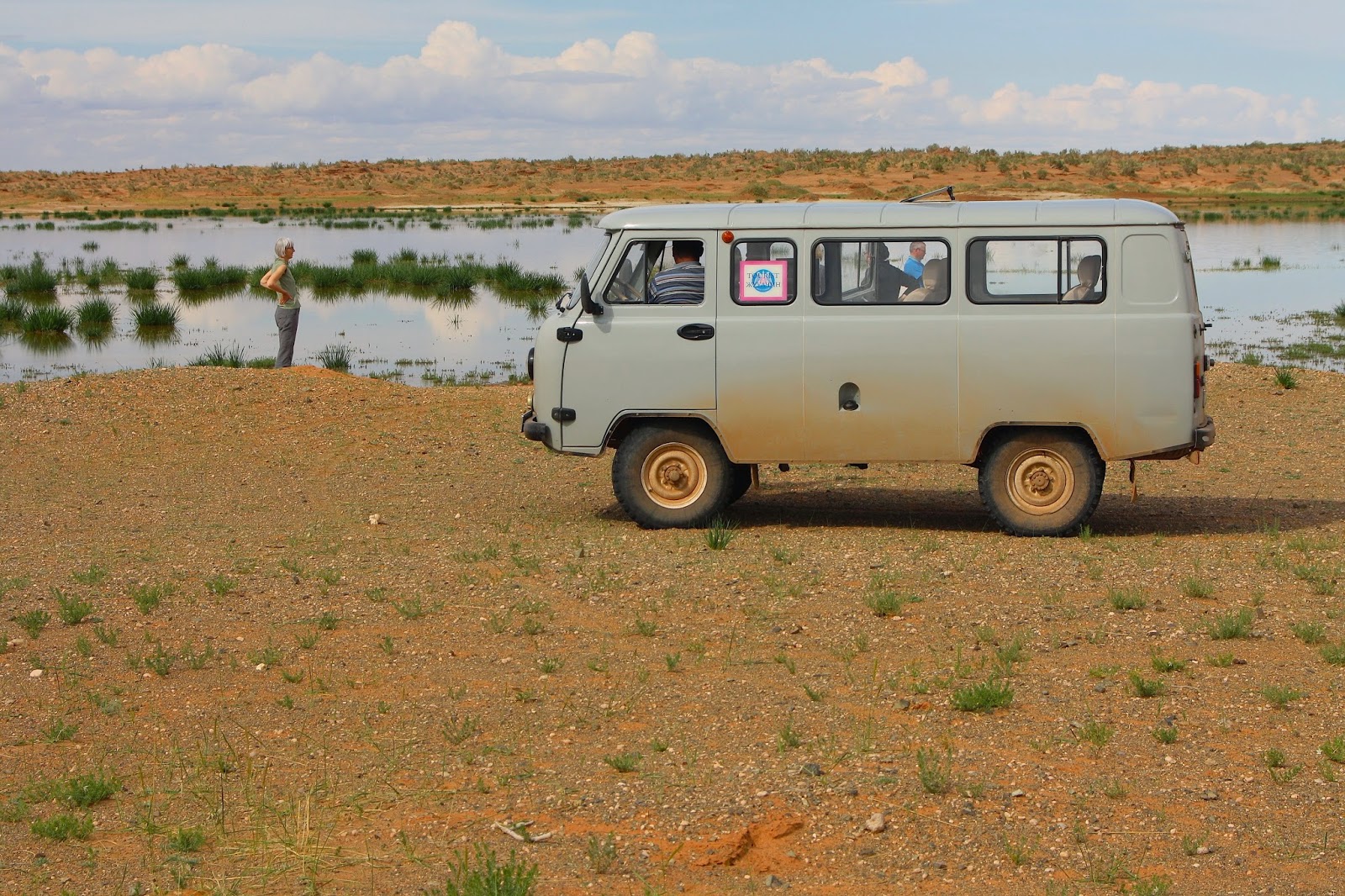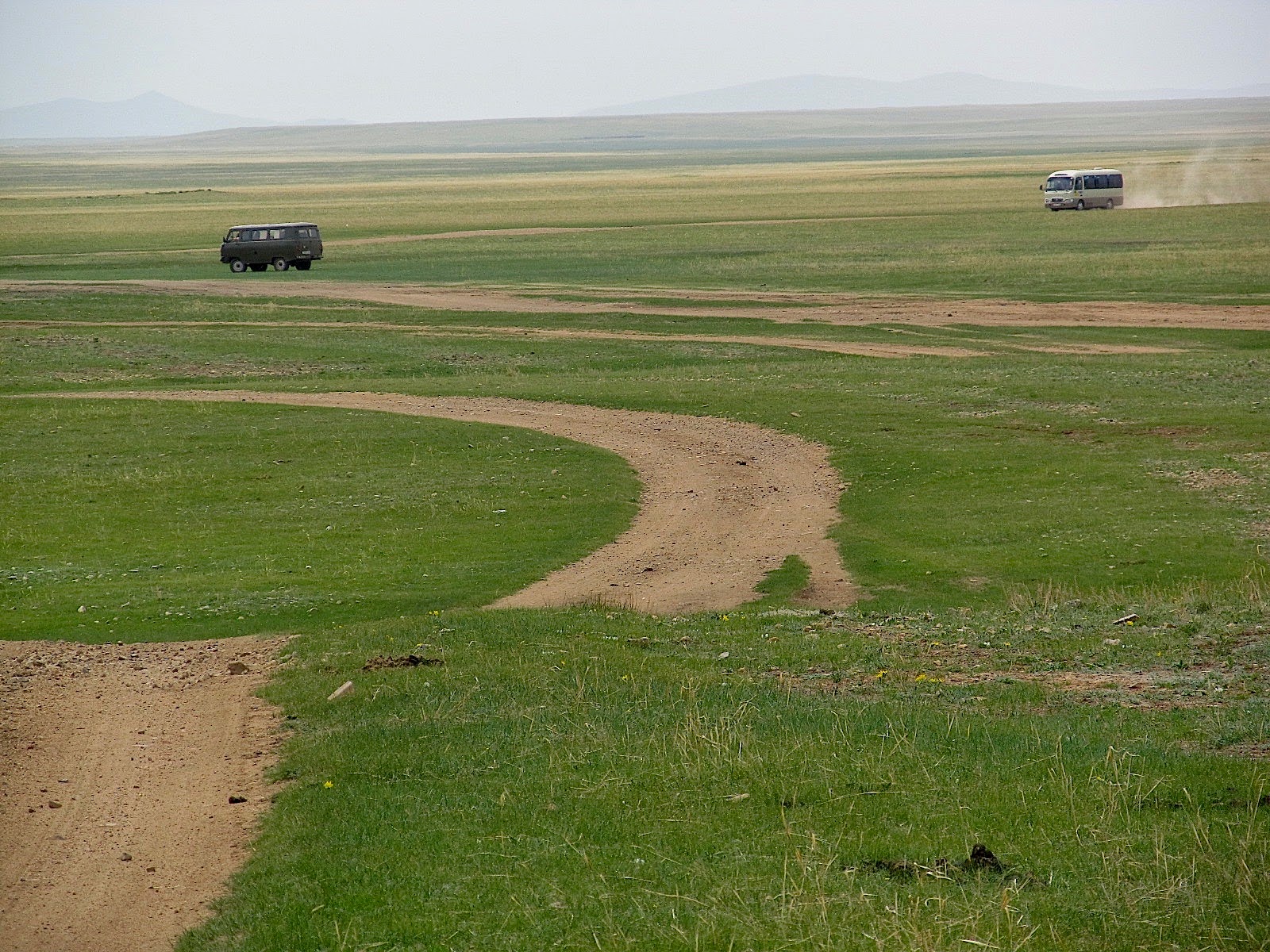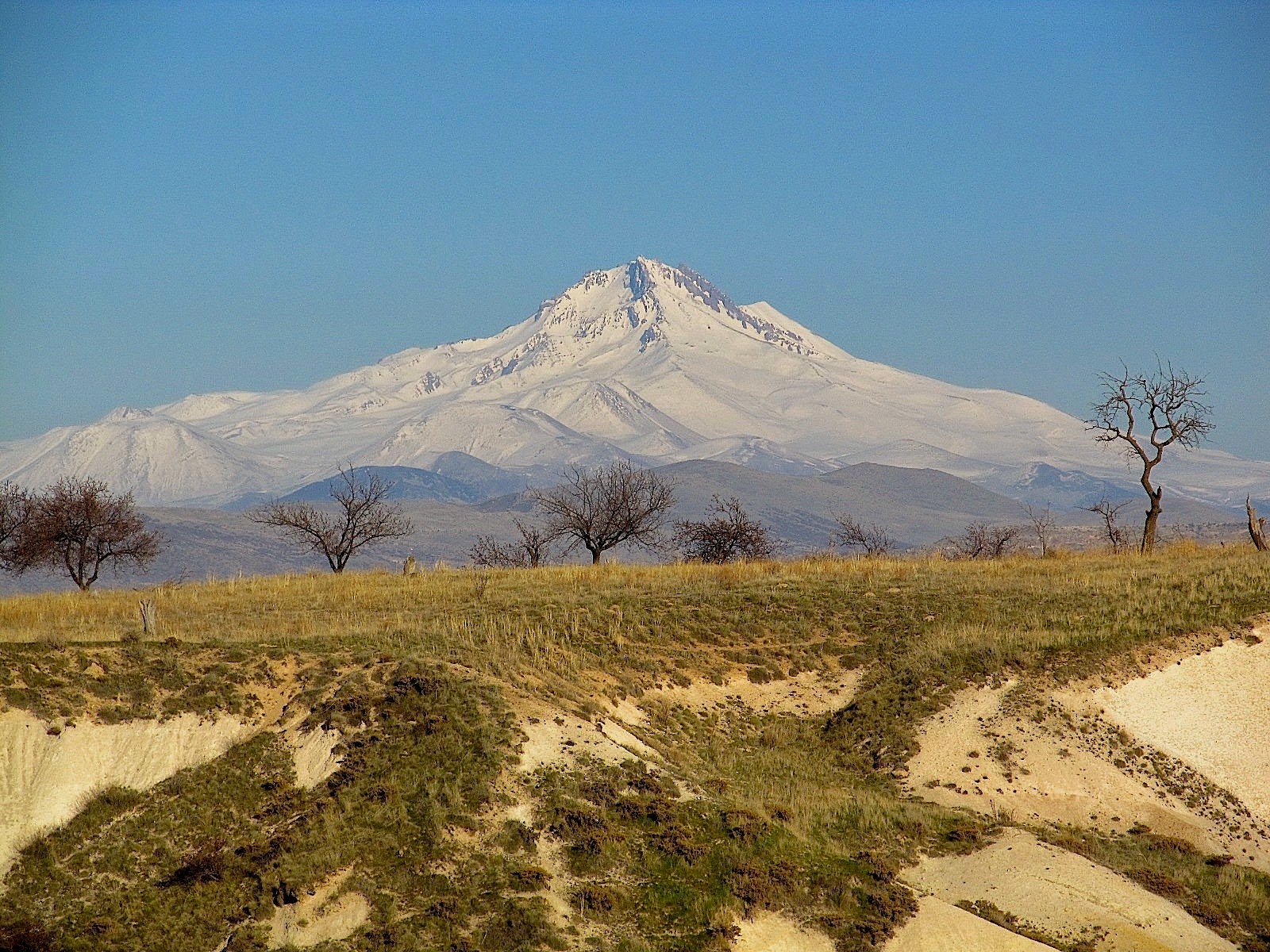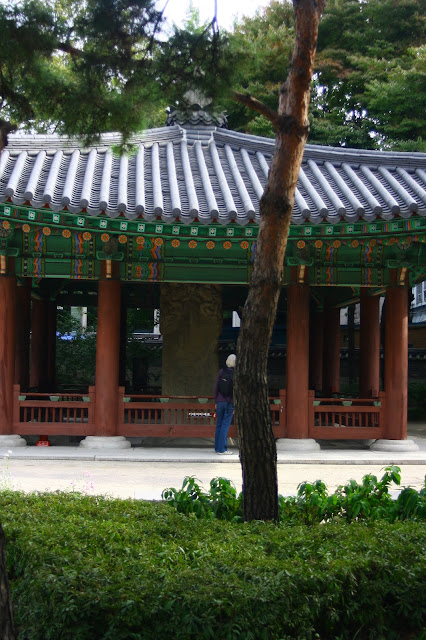From June 15 - 19 Judith and Scott travelled with their friends, Sarah and Simon, to the south Gobi Desert. We flew from Ulaanbaatar to Dalanzadgad with our tour guide, Tsogii, then were picked up by our driver, Oogii, for the 66 km drive to the Three Camel Lodge where we stayed. The Lodge itself is constructed of wood and stone which is unusual in Mongolia; it is designed with strong Buddhist influences and does not have a single nail in its structure. It comprises a bar with a large sitting area leading out to a large veranda overlooking the plain. External doors off each side and at ground level lead to the washrooms. Guests stay in the gers such as that seen in the lower right of the photo above. The large ger with the orange door facing the Lodge is the Reception Ger and Gift Shop. Off to the left of the Lodge and attached by a covered walkway is the dining ger. The service was attentive and thoughtful and the meals were excellent!
The Lodge is hidden by a rocky rise behind the the buildings such that when approaching from the north one can't see Three Camels Lodge until well past the rise. We found distances and heights to be deceptive in the desert. Some of the rocky outcroppings show signs of the petroglyphs that are in evidence in several locations across the south Gobi.
On our first full day we travelled to the Yol Valley National Park in the foothills of the Altai Mountains. An ancient river carved through the valley and the glacier ice was still in evidence once into the gorge . Yolyn Am (the Vulture's Mouth) is known for its varied birdlife and wildlife sightings. We were lucky to see 5 Ibex high on the ledges above us.
A herder had some of his horses near the entrance to the gorge.
The ice was melting but we walked over a kilometre on its slippery surface.
During our stay the weather was very un-desert-like, with some sun but often with cloudy skies. Near the end of the day the sun peaked out to illuminate the grassy plain leading out from Three Camel Lodge. The spring has been wetter than usual, accounting for a much greener and grassier desert. The herds will be fatter this year and better able to withstand the winter when it arrives.
Day 2 saw us travel to Horgoryn Els, the Singing Dunes, which are among the largest in Mongolia. At their tallest they are 600 m high, 3 km wide and 180 km long. We did attempt to climb the dunes but only Simon made it to the top. Bactrian camels can be seen all over the south Gobi. Most have been domesticated but there remain 300 wild Bactrians known as khavtgais, now protected in Mongolia's national parks. It's clear to see why they are called the ships of the desert.
Not originally on our itinerary but one of the many highlights of the trip was our visit to a "mini-nadaam" where horse-racing and wrestling matches took place after an ovoo ceremony at which the Buddhist monk chanted prayers to invoke rain and plentiful grass for the summer grazing. On the horizon can be seen the riders, all of them children on 3-year old horses racing towards the finish line .
Some of the riders rode bareback, some rode on traditional Mongolian saddles made of wood.
Some of the elders dressed in traditional deals waiting for action.
Families came from their soums (villages) scattered throughout the area for the festivities but also for a day of socializing and catching up on news.
Rain was prayed for and rain was what we got, along with several hours of thunder and lightning. The nadaam continued, despite the weather. The heaviest of the rain fell after the children on the 5-year-old horses had headed out to their 15 km race starting point.
It was not sunny enough for the Flaming Cliffs to be flaming but they were spectacular nonetheless. These great red-orange sandstone formations that rise up out of the desert are known for the number of dinosaur bones and eggs found in the area. The Flaming Cliffs are rich with fossils and paleontological expeditions continue to make discoveries at this site.
We were dropped off by our driver at one end of the cliffs and while he drove down the valley to meet us at the other end we walked along the top of the ridge.
No, that's not a mirage, it's an oasis. After the heavy rains of the previous day the water levels were a bit higher than usual but this really is a lake in the desert.
Greenery and flowers sprang up out of seemingly impossible conditions for growth.
The oasis with the cliffs in the distance.
We travelled everywhere in this Russian Fourgon. These vehicles are dependable, are easily repaired and can run on the most difficult of terrain. After several hours one feels significantly jostled but we always felt safe. There are no paved roads in the south Gobi, just desert tracks (and sometimes just desert, without the tracks!)






















































